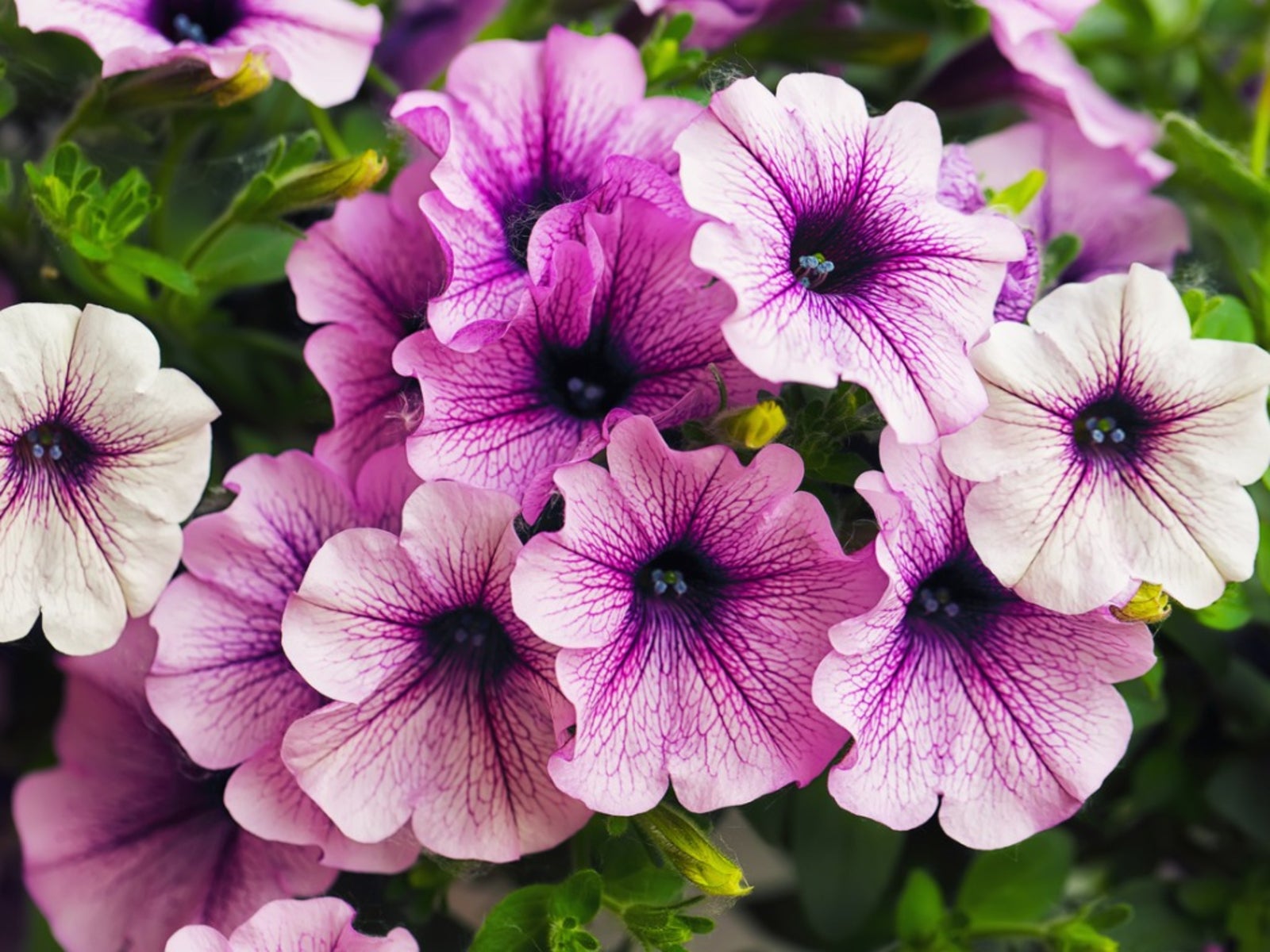Petunias: Complete Plant Care And Growing Guide
With loads of trumpet or funnel-shaped blooms, prolific petunias are a favorite bedding plant due to their low-maintenance nature and cheerful colors.

How To Grow And Care For Petunias In The Garden
Showy petunias are among the most popular flowering annuals. They are prized for their pretty blooms that come in a variety of colors, sizes, and growth habits. Learning how to care for petunias is straightforward, but they require some special care to keep them looking their best.
Quick Facts
- Botanical name: Petunia x hybrida
- Height: 9 to 12 inches (23 to 30 cm)
- Spread: 1 to 3 feet (.30 to .90 m)
- Sun exposure: Full sun
- Soil requirements: Average, well-drained
- Hardiness zones: 10 to 11
- When to plant: Spring
Petunia Care
Caring for petunias is relatively simple if you provide them with the right growing conditions. A little pruning, full sun, and moist, well-drained soil should keep them happy and blooming all summer and into the fall.
Light
A petunia will do best in full sun but will tolerate partial shade. Too much shade results in unattractive leggy growth.
Water
Petunias prefer medium moisture in the soil. They will tolerate some neglect when it comes to watering. Once a week is ideal, but spreading types of petunias need more water.
Temperature & Humidity
Sign up for the Gardening Know How newsletter today and receive a free copy of our e-book "How to Grow Delicious Tomatoes".
Petunias tolerate heat and don’t require a lot of humidity. They will not survive low temperatures but will thrive between the last frost of spring and the first of fall.
Soil
Petunias need soil that drains well, so amend as needed to avoid soggy soil or standing water. In terms of fertility, petunias tolerate average to poor soil. For the best results, add organic matter to poor soil.
Fertilizer
Use a balanced fertilizer at the time of planting petunias, then use a fertilizer designed for promoting flowers every couple of weeks during the growing season. Spreading types of petunias are heavier feeders. Fertilize these once a week.
Problems, Pests & Diseases
There are not many serious pests or diseases associated with the petunia flower. Aphids, slugs, and snails may cause some damage. Root rot or mold can occur in wet conditions and with poor drainage.
How to Grow Petunias from Seed
The easiest way to grow petunias is to buy transplants in the spring from your local garden center. However, for hard-to-find varieties, you might want to start with seeds. Petunias need several weeks from seed before being ready to transplant. Plan for about 10 to 12 weeks indoors before the last frost.
Sow the small seeds directly on the top of moist soil or seed starting mix. Keep them moist but not soggy, and leave them in a warm, sunny place. Harden transplants by placing them outside in a sunny spot during the day for a few days, bringing them back in at night.
How to Deadhead Petunias
Petunia varieties with larger flowers must be deadheaded to get new blooms. Simply pick off and dispose of spent flowers as they appear.
Propagation
The best way to propagate petunias is by cuttings. Most varieties are hybrids, which means the seeds won’t breed true. Clip off a healthy stem and remove the lower leaves. Place the cut end of the stem into moist potting mix. You dip it in a rooting hormone first for better results. Keep the cuttings moist and in a cool, dark spot as they root.
How to Grow Petunias in Pots
Petunias do very well in containers. Some varieties trail and spill over the edges of pots. You can plant petunias alone or mix them in with complementary container plants. Use a quality potting mix, and be sure the container drains well. You will need to water potted petunias more frequently and ensure they get plenty of time in the sun. Because they are annuals, you will not need to repot petunias.
Overwintering
Most gardeners treat petunias as annuals, but they are actually very tender perennials. If you have a special variety, you might want to overwinter it for next year.
Cut the plants back by about a third. Bring containers indoors before the first frost. Dig up bed plants and transfer them to containers. Provide the plant plenty of sun and water to start and then begin to reduce them over several weeks. This allows the petunia to go dormant. As it loses its leaves, move the plant to a cool, dark location for the rest of the winter.
Petunia Varieties
There are hundreds of varieties of petunia hybrids. They generally fall into four categories:
Grandiflora. These are large, single or double flowers in a variety of colors. Grandiflora petunias tolerate heat less well than other types.
Multiflora. Multiflora petunias are more compact with smaller flowers, but they bloom heavily all summer. They tolerate wetter conditions.
Milliflora. These petunias have many small blooms. They look very nice in containers.
Spreading. Also known as groundcover petunias, spreading types growl low and wide. They make good flowering groundcovers and look nice in hanging baskets.
Frequently Asked Questions
Are Petunias Perennials?
Petunias are very tender perennials and are hardy only in zones 10 and 11.
Do Deer Eat Petunias?
Yes, deer do eat petunias. As long as they don’t eat all of a plant, it will regrow.

Becca Badgett was a regular contributor to Gardening Know How for ten years. Co-author of the book How to Grow an EMERGENCY Garden, Becca specializes in succulent and cactus gardening.

